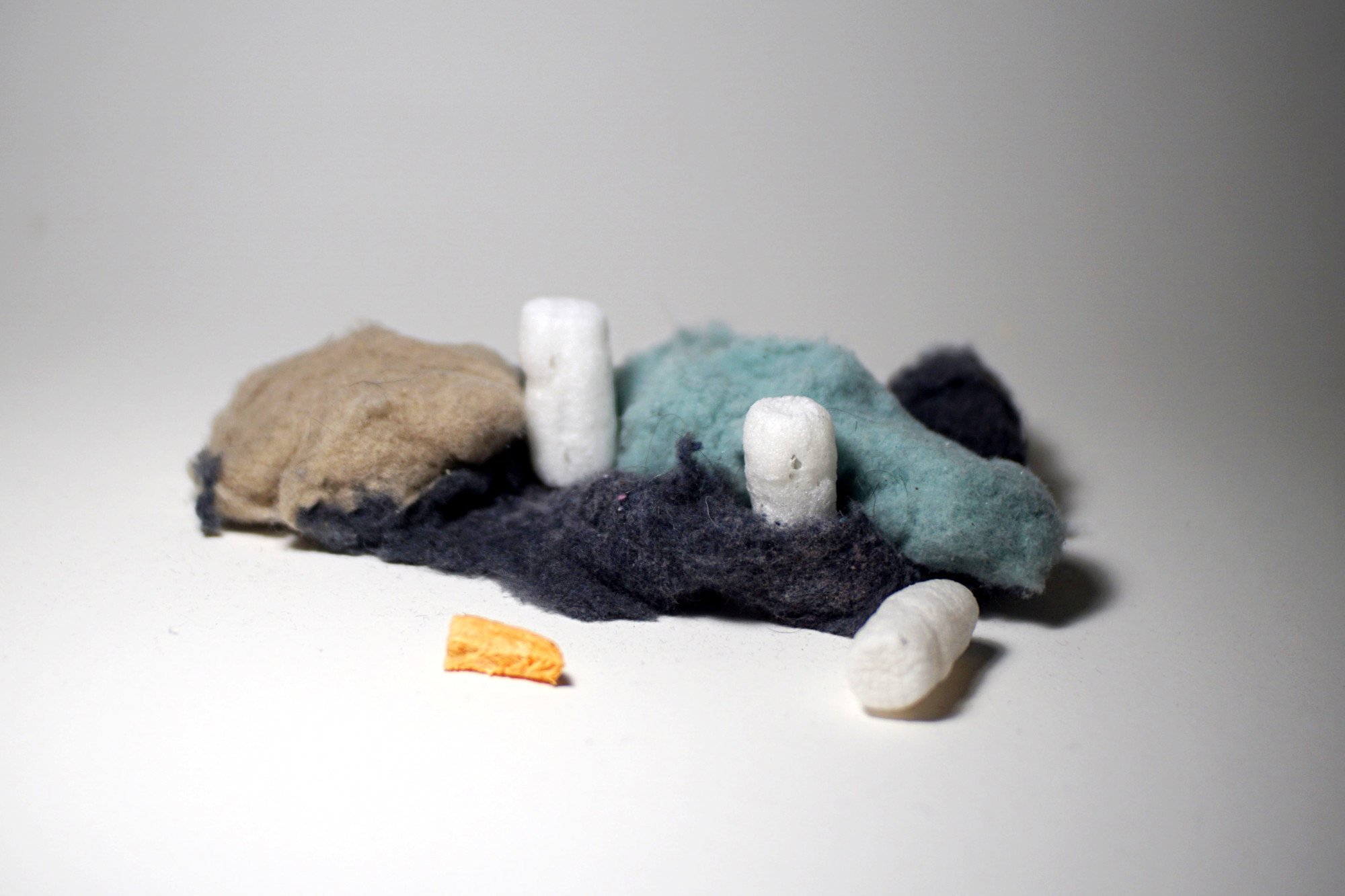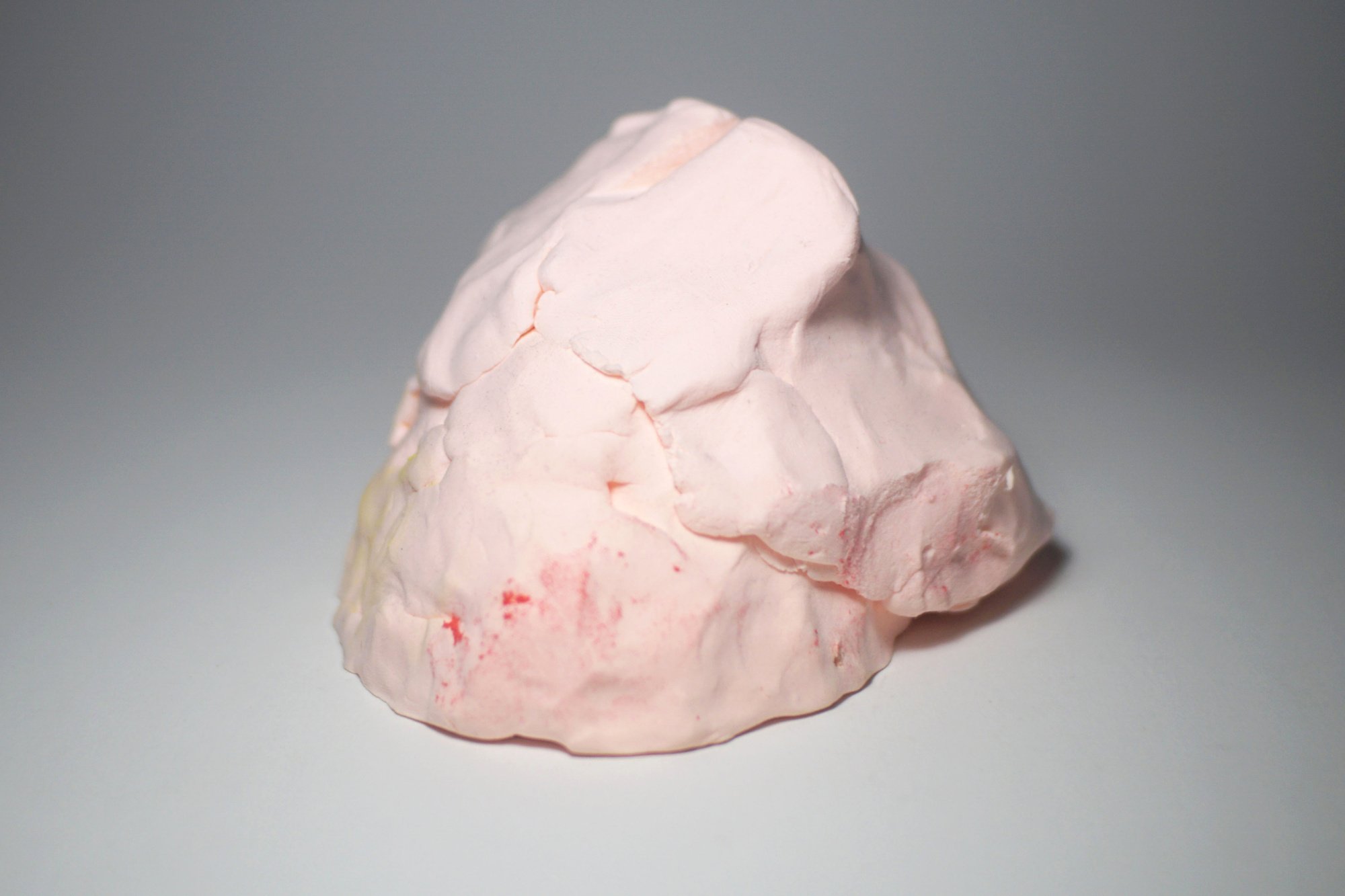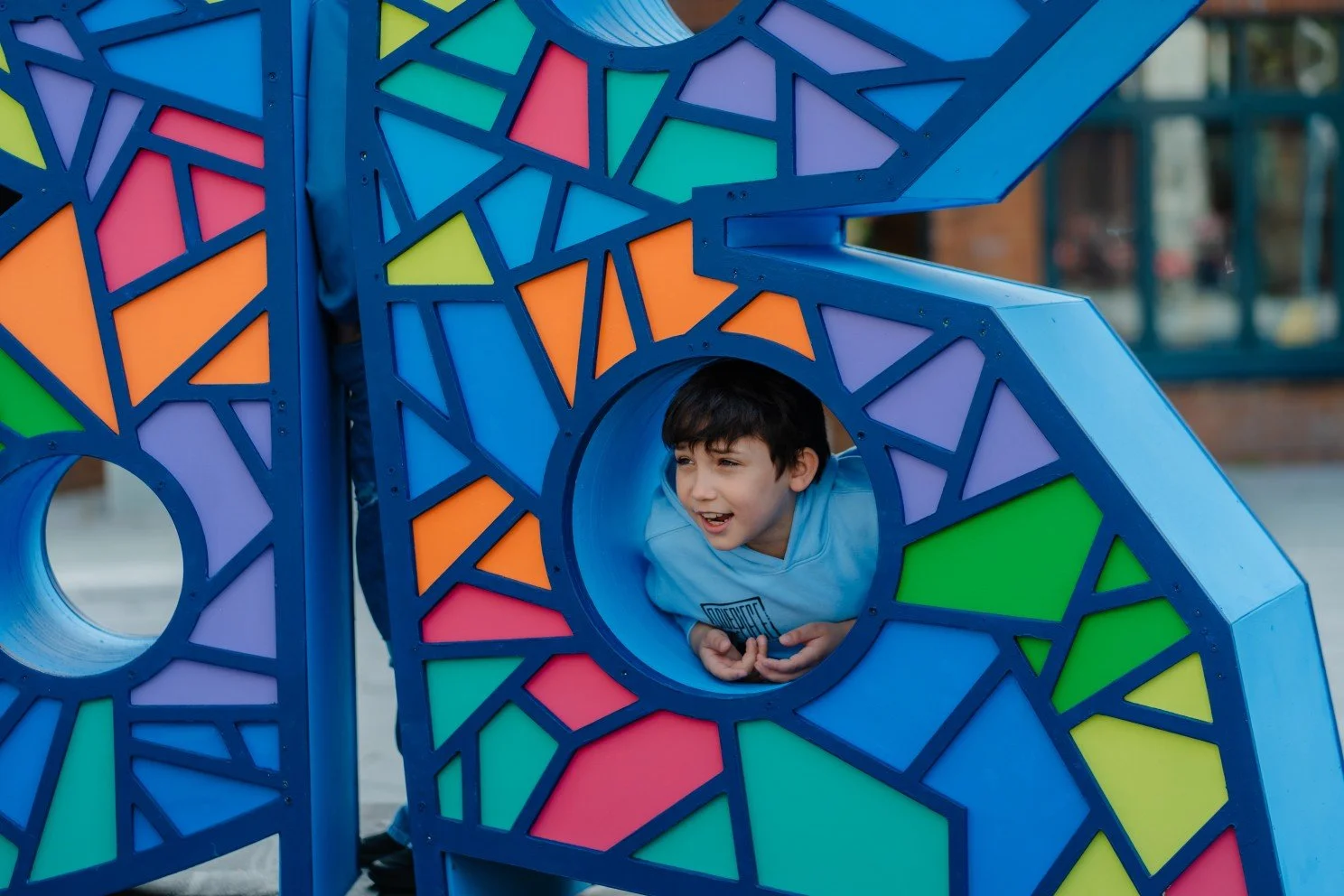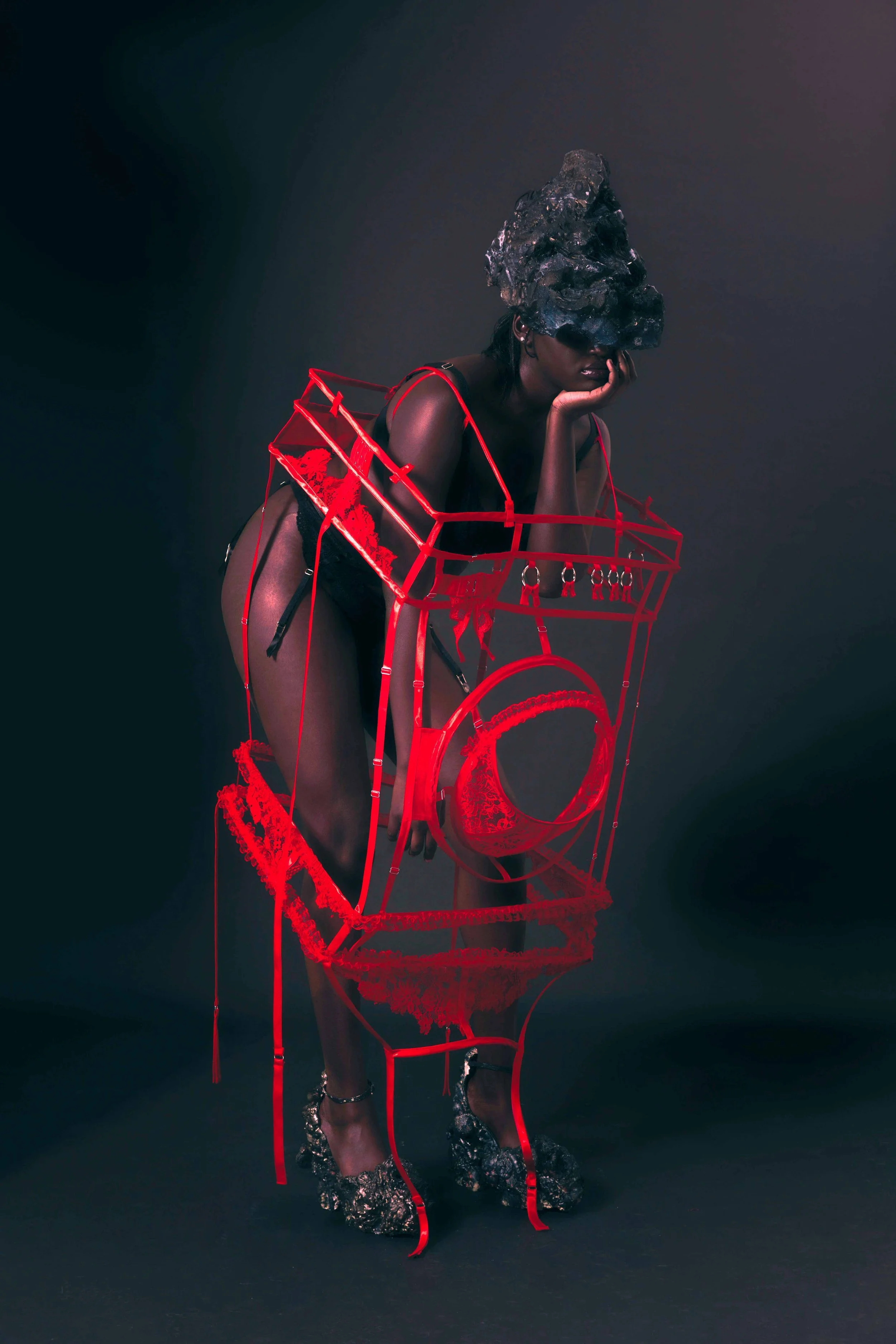10 Questions with The2vvo
The2vvo (thezwo) is an artist duo from Kazakhstan currently living between Berlin and Los Angeles, made up of Eldar Tagi (sound art) and Lena Pozdnyakova (sculpture, architecture, visual arts). The duo explores the complicated dynamics between cultures and spaces, objects and processes through sound, sculpting, visual art, and performance. Their research often takes the form of sound sculptures, recordings, and live audio-visual performances. Nomadic in nature, the duo traveled extensively, participating in festivals such as Ars Electronica, Unsound, CTM, Bauhausfest, and Soundpedro, and taking part in residences: Kuona Trust, Nairobi, Kenya, and CEC Artslink, among others. Recently, artists have shown their sculptures at Los Angeles Municipal Gallery and CICA Czong Institute for Contemporary Art.
Lena Pozdnyakova is an alumna of the Design Theory and Pedagogy program at the SCI-Arc in Los Angeles, Sheffield University in the UK, and DIA Hochschule Anhalt in Germany. She is currently writing her Ph.D. dissertation in Art History at Freie University in Berlin.
Eldar Tagi is an independent composer of electroacoustic music, sound artist, and improviser. Noise, chaos, and feedback are prominent elements in Tagi’s compositional and installation works, often interweaving with soundscapes of natural environments. He often explores the complex dynamics between the objects, spaces, and sound through recordings, acoustic sculptures, and live audio-visual performances. Eldar is currently doing his Master in Sound Studies and Sonic Arts at UDK Berlin.
Lena Pozdnyakova - Portrait
Eldar Tagi - Portrait
ARTIST STATEMENT
“As a duo, we work at an intersection of material and ephemeral, acoustic and electronic, order and chaos. Many of our projects spring out of ongoing research on the subject of the Anthropocene, with its by-products and materiality presented through junk, abjected matter, abandoned pieces, and found objects. We contrive distinct sonic spaces using esoteric and odd musical instruments, feedback systems, as well as unaltered found sounds. These elements become descriptive of the new paradigm on micro and macro levels. By addressing the objects of man-made production in combination with the modes in which these objects are produced, inhabited, and used, we hope to re-interpret the relationship between humans and nature. We are doing this through fragmented multi-sensory experiences, improvisation, and immersive media projects that occupy both digital and physical spaces and bring in a set of alternative frames for addressing contemporary reality in artistic research.” - The2vvo
INTERVIEW
First of all, introduce yourself to our readers. Who is The2vvo? How did you get together and start working as a duo?
Eldar Tagi: We are Eldar Tagi and Lena Pozdnyakova—an artist duo originally from Almaty, Kazakhstan. Over the years, we've become quite nomadic, with our longest residencies being in Los Angeles and Berlin. My main artistic medium has always been sound, and Lena's background is a blend of visual art, work with concepts and sculptures.
We first got to know about each other from common friends – the art scene in Almaty is quite small, and people tend to know each other – but for a long while, we were physically located in different parts of the world and didn't meet in person. On distance, we collaborated on a project facilitated by the Goethe Institute called "Gletschermusik" that aimed to attract attention to melting glaciers in Central Asia. This was our first project when we addressed the subject of changing environments as a team. Our energies and ideas matched, and since then, we've been looking for opportunities to work together. Once we've actually met, we wanted to combine our practices to see what would come of it. So to put it in a few words, we share the same passion for traveling, research, and art.
Lena at work © The2vvo
Eldar at work © The2vvo
What is your artistic background? And how do you mix and blend your different experiences and skills into one project, The2vvo?
E: My background is in music. I have always felt that sound has a very strong affective power, and it appeared simultaneously challenging and comfortable to work with. My original instrument was a guitar, and I still use it my practice. However, these days, a lot of what I do involves electronic sounds and various forms of sound synthesis. I am particularly fond of odd and esoteric instruments (i.e., daxophone, instruments of Peter Blasser, such as Shbobo Shtar).
I feel like our collaboration with Lena is quite natural. Our skills and experiences are often contrasting and complementary to one another. We kind of help each other explore unfamiliar territories.
Lena Pozdnyakova: For as long as I remember, I was always interested in visual aspects of the world and its strangeness. When I was a child, I would collect leaves and stones with strange shapes. My interest in assembling found objects together, imagining stories, and drawing them, led me to art school and then to an architectural school. Model-making and hand-drawings were my favorite part of architectural education as they allowed me to play with materials and techniques that later opened up my practice to work with sculpture and installation.
With that said, I was also always interested in the possibilities of sound to inform sculptural and visual forms. Eldar's vision and his drive for experimentation became a perfect match for this ongoing exploration. Together, we explore the potential of combining sound, visual language, and physical forms by means of live performances, sound sculptures, installations, and events.
Attention Environment Series, Sculpture, 2020 © The2vvo
You work with sound, sculpting, visual art, and performance. How do you blend these different techniques? And what is your creative process like?
L: In our work with performative sound sculptures, we are merging visual and sonic elements so that the endpieces somewhat resemble self-made disposable prepared instruments. When we work with spatial installations, this extends onto the physical space. But the principle is similar in both.
E: Although I'd add to this that in the case of sculptures, the preparation is actually inherent in the very process of making these sculpture-instruments. But "preparation" as a theme overall runs like a thread consistently throughout our practice. I think we are both attracted to this notion of transformation when something familiar and ordinary changes and becomes mysterious. Increased unpredictability that is also associated with these objects also keeps us interested. We are in favor of giving up some level of control in favor of increased interactivity. This also translates to how we incorporate electronics.
L: Something also has to be said about the visual aesthetics of the prepared instruments. The superimposition of common objects like screws, rubber bands, fans, and ping-pong balls onto a traditional instrument is quite striking. There is an element of playfulness there, as one wonders about the correlation between those objects, as well as a form of protest since the instrument is now stripped of its originally intended playing techniques, left to new discoveries. The mixture of materials, the composition of interacting objects, and the overall shape and structure form together with a unique sculptural identity.
You say that you work "at an intersection of material and ephemeral, acoustic and electronic, order and chaos." How do you resolve this duality? Is your work as a duo completely independent from your respective solo work?
E: For me personally, there is no duality in these things. They are rather interactive and highly fluid processes. A sculpture or an instrument is a physical object that, once excited, starts to emit ephemeral sound waves into the space. We use digital and analog electronics to further amplify this sound, change it, feed it back into itself, and so on. These also manifest in altering the space. Since we use feedback and non-linear processes, there is a constant rebalancing of chaos and order. One continually emerges out of the other. Our practices differ in some regards just by the very nature of our individual focus. Yet, we are always communicating with each other, and ideas certainly migrate from time to time.
L: I have been actively involved in academic work and research on resiliency. Of course, this is all, again, directly related to the problem of climate change, and invariably, this work has also been informing my interest and thoughts on the subject of Anthropocene. However, at UCLA, where I was part of the research and coordination team in the ArcDR3 (Architecture and Urban Design for Disaster Reduction and Resiliency) initiative for the last three years, this year, I was involved in setting up and preparing the material for a large-scale exhibition in Tokyo. The show demonstrated to the broader public the potential of regenerative urbanism as an approach for resilient and inclusive development in architectural and urban environments. These were the research group's findings from the 11 Universities of the Pacific Rim that, for three years, were part of the project.
On the side of curatorial practice, I have been actively involved in organizing and setting up community events of various sorts. Since 2014, together with Eldar, we have been working on a series of curatorial projects that involved community experiments with sound and video art at Studio106LA – we organized collective multimedia improv sessions, group exhibitions, and concerts, and curated awareness projects. In addition, we have shifted to an online platform during the past three years and continue to set public events in virtual spaces.
A huge focus in your work is the Anthropocene or the impact that human beings are having on Earth. How do you incorporate this theme into your work? And what other themes do you work with?
L: The shift towards speaking about the surrounding world that is currently undergoing a drastic change and our position within this transforming world has naturally evolved from our early projects. The overall discussion and the amount of information that reaches us on environmental topics hasn't passed by unnoticed. Plus, after traveling around the world and living in different places, we realized that many global and local issues are connected, and we care about similar things in different parts of the planet while expressing them in various cultural ways. People have addressed the themes of the human relation to their environment throughout centuries. However, by living in this particular paradigm of climate change – an urgent matter that is so central to our existence now – we, as many others, try to reflect on it. Many of us are searching for ways to speak about this abstract yet very real issue. The interesting point is that the introduction of the term "Anthropocene" demarcated the shift in perception of the human place in the earth's environment and somehow set the critical countdown with the room to take action. With the current data showing that before irreversible changes in our environment happen, we have very little time to address the situation, learning about this subject becomes extremely important. So the topic of climate change is a timely one, and it is constantly on our minds.
On a very personal level, the understanding that our actions impact the environment brought us to adjust our personal behavioral and dietary patterns. Although, we understand that this has a very tiny impact. It makes us feel better yet does not resolve the problem. And it is a neverending story of educating ourselves and being aware. Plus, we are speaking about this now from the position of particular privilege regarding access to information in several languages and accessibility of produce at hand. So we are under no illusion that addressing issues such as climate change, in addition to the public awareness about the problem and its local initiative, requires a systemic, coordinated global effort from the side of the systems in power – state leaders, corporations, and producers on all levels. The global response to the problem will have to be accessible and inclusive to many different groups of people living in the world.
But instead of moralizing and talking about the context through the prism of drama, we are much more interested in points of tension and contradiction embedded in addressing the question in a playful manner: by incorporating abjected and disposed materials into our pieces. Commonly, we categorize things as real and imaginary, organic and synthetic, man-made and natural, yet it is proven that the distinction resides in perception and perception only. From an artistic point of view, we find it fascinating that the Anthropocene, as Ted Krueger has brought up in one of his articles, is a predominantly cultural phenomenon, and naming the present geopolitical epoch after ourselves – "is part badge of honor, part mark of shame."
E: In regard to other themes, I think that somehow we try to follow the resonance of the time and place we occupy. I think we both feel in accord with the idea of improvisation conveyed by artists like George Lewis or Jennifer Walshe—not only in relation to sound and music, but to a way of life in general. Improvisation requires one to pay close attention to the surroundings, listen, and respond. Improvisation is not so much about control but about interaction, and we like this approach. Therefore, it is fair to say that many of our projects are, in one way or another, responses to our situation, which itself is constantly changing.
Attention Environment Series, Sculpture, 2020 © The2vvo
Attention Environment Series, Sculpture, 2020 © The2vvo
Attention Environment Series, Sculpture, 2020 © The2vvo
What messages do you want to convey to the public?
L: With our work, we want to speak about the timely issues not only because they matter but also because the ways in which we are talking about the problems might bring another angle and pose other questions to which we don't have the exact answers ourselves, but we are eager to explore and learn. What does it mean to create art in the frames of the new geological epoch? How do we express ourselves with the new understanding of changing world? How are such attributes of culture as ornamentation reflected in the tectonics of this world-in-transformation? How does the context of overproduction, overconsumption, urbanization, and climate change inform the aesthetics and perceptions of our environments? How do we tell stories of how we live now and whether they need to be told? How do we engage with the audience and environment in various conditions? These are the kinds of questions we ask ourselves.
E: I would also say that trying to convey a particular message through artistic practice may be a troublesome affair. The relationships between our process, the outcome, and the reception of that outcome are non-linear. If we are inspired or motivated by something, it shows up in the work without our direct attempt to send a specific message. I doubt that when someone sees us perform with strange composite sculptures that produce rattling, droning, and screeching noises, they immediately think "anthropocene". This is more of a vector we take to get moving. They, however, may get curious, and curious is good because it starts conversations.
You have traveled extensively and worked in different parts of the world. How has the Covid pandemic influenced your work and your practice? Do you miss anything from your pre-pandemic life, or do you discover something new over the past couple of years?
L: We were in California when the pandemic started. We were lucky to have had jobs and were able to go through the past two years without a significant loss. However, it was not an easy experience to be isolated from the artistic community. Especially in the first year of COVID-19, when the situation was new. People started working remotely while lockdowns were quite strict. Everyone, including us, had to adjust to new codes of being with other people and doing work within the new online environment. Art events and online shows have been continuously canceled, and live events became stream events – this was quite frustrating. Under such conditions, we focused primarily on the work that can be done from home – Eldar worked on a new album with Patrick Shiroishi, and we have created several video works shown at Soundpedro in California, Ars Electronica Global Gallery in Linz. Our curatorial practice has also branched out to an online environment where with Studio106LA, we have created a series of awareness shows, some of which were supported by UCLA international institute, Urban Humanities Initiative at UCLA Department of Architecture and Urban Desing, and UCLA School of Arts and Architecture. We have also written a lot and continuously published educational articles and essays. But as soon as there was a chance to perform live, we grabbed it.
We have to say that during the COVID-19, we were also fortunate to be located in LA. Los Angeles helped us with its abundance of sun and evergreen plants. In darker parts of the world, where the weather conditions are more severe, the lockdowns must have been more difficult for the people.
E: I think I am starting to feel the aftereffects of the pandemic just now as we try to reintegrate into the world. It seems somehow new again, and being able to do previously normal things like going to concerts is very strange. But that may also be influenced by the fact that on a global scale, we smoothly have transitioned from one messy situation into another.
How do you keep your followers and collectors engaged? Do you participate in online exhibitions or events? Or do you prefer in-person ones?
L: We are regularly showing things online. However, we were not very active on social media in the past two years. This fact already suggests that we are those who prefer in-person events. We hope to engage with the virtual spaces a bit more actively.
Nevertheless, between 2020 and now, we have been actively showcasing our projects – we have shown the sound sculpture series "Attention Environments" at (LAMAG) Los Angeles Municipal Gallery. It was their first online show ever, therefore a historic moment – and it was very exciting for us to be part of it. We have also shown our work at Sound Festival in San Pedro, twice participated in an online show as part of Ars Electronica, and performed live as part of the stream at Experimental Sound Society in Chicago. So we can not say that the period was not productive for us.
What are you working on now, and what are your plans for the future? Anything exciting you can tell us about?
E: Last summer, we had another recording session with Patrick Shiroishi as a trio with Lena. I am currently editing it and hope to have it released this year. There are a few other recording projects in the pipeline too. I am also enrolled in the post-graduate program at UDK called Sound Studies and Sonic arts, so there are some projects that come through this endeavor. And we hope to start playing live more.
L: With Distant Realities – artists and architects from Innsbruck – we are preparing a show, "Hello Void!" at Vorbrenner in Innsbruck in fall 2022. The show is about the role of a ritual within the current post-religious paradigm. It will showcase a hybrid of sonic, new media, and sculptural form and reflect upon the collective notion of culture as a supernatural force.
And finally, where do you see The2vvo in five years?
L: We will be doing the same thing – exploring the world around us through sound and art, and traveling. However, who knows, we might be more settled in one place by that time. Maybe we will be teaching too. Time will show.



























